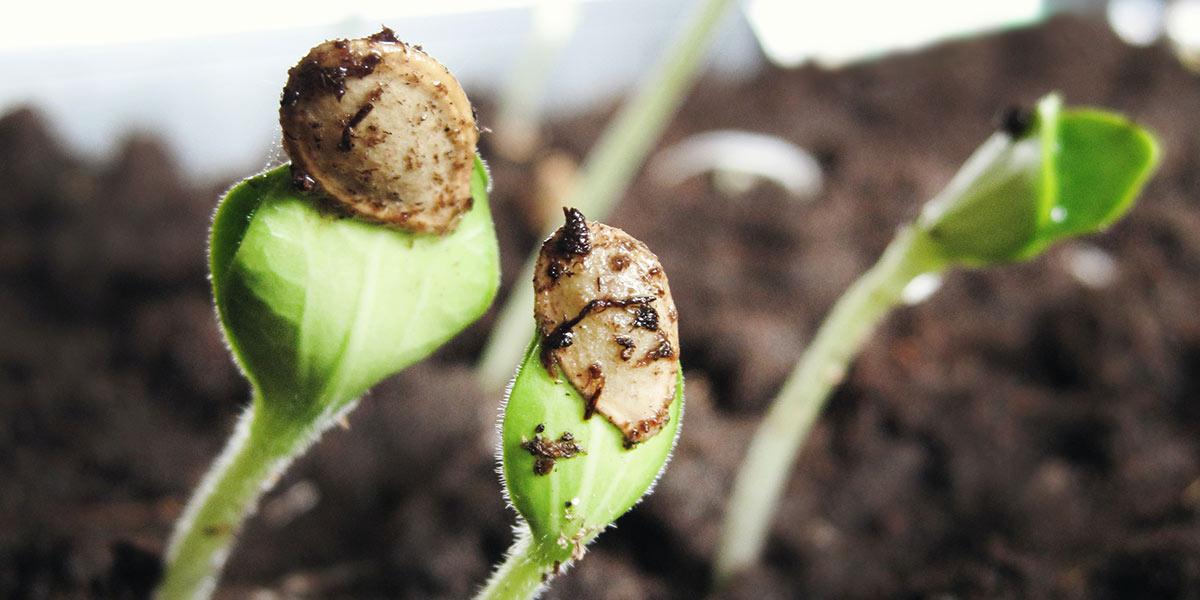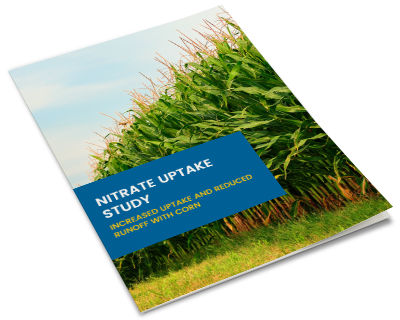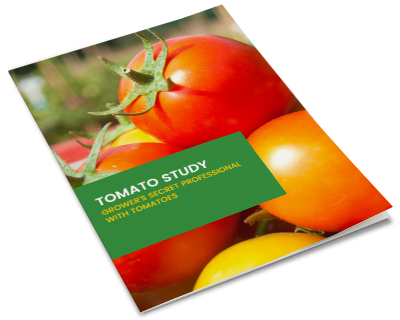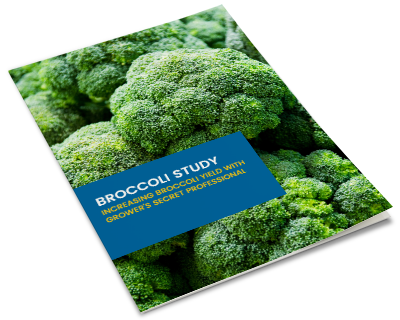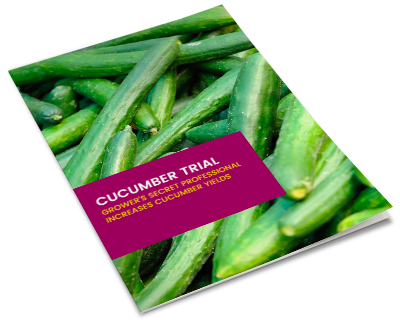|
Posted By: Wesley Chun, Ph.D. / |
Seeds of Change: What’s in your Packet of Certified organic seed?
By Dr. Wesley Chun Ph.D., Grower's Secret, Chief Science Officer
Abstract
There are three reasons for using certified organic seed to produce organic crops. First, the National Organic Program (NOP) guidelines recommend use of organically produced seed for organic crop production. Second, it is good for your conscience since organically produced seeds inherit environmental conservation and pollution reduction benefits. Third, organic seeds are claimed to be healthier (more resistant to pathogens and pests), and better adapted to grow under organic cropping systems. NOP guidelines, and environmental sustainability benefits are compelling factors for using certified organic seed. The third reason is highly dependent on the seed producer and the source of the seed. Most plant varieties were bred under conventional agricultural systems. However, there are now university and private breeders who are breeding new varieties using organic growing methods. While organically bred varieties are available, the performance of these varieties may be regionally limited. Seed selection should be based on production needs and environmental growing conditions first, and then organic if it is available. Check the facts when organic seeds claim to be healthier, pest- and pathogen-resistant, and pesticide-free.
Introduction
Seed packaging with the USDA certified organic seal contains seed that was produced from organically grown crops and processed under the rules and guidelines of the National Organic Program (NOP). Seed labels have a wealth of information that describes the variety, lists hardiness zones, and provides seeding and growing instructions. Seed labels often have genetic descriptions such as Heirloom, F1 Hybrid, or Hybrid. The seed packet may also have additional stickers such as Non-GMO and some websites say the seeds are gluten-free. All this information can be confusing to the novice or uninformed gardener. It is essential to know the regulations for organic seed production, understand what plant breeding involves, and what the Non-GMO and gluten-free descriptions mean. It allows choices of seed that are best suited for your growing needs.
The rules
Organic seed certification means that plants were grown, and seeds were harvested, processed, and packaged organically. A USDA certified organic seal is the result of this process. The seal is verification that seed production followed organic conditions that embraced values such as sustainability, biodiversity, cultural diversity, and environmental stewardship. It is important to note that modern-day agriculture also embraces similar values for land management and minimizing environmental impacts. Soil fertility and pest management practices for organic seed production integrates cropping patterns, organic manure, biofertilizers, cultural practices, biopesticides, seed treatment, and use of other plant-derived products. Synthetic substances may be used in organic crop production (See list of allowed synthetic substances). Conventional growers also use these techniques and inputs but have the option to utilize other inputs as needed. The NOP guidelines recommend using organic seed. However, the untreated, conventionally produced seed can be planted if organically produced seed is not available. Thus, seeds with the USDA certified organic seal may have started with organic or untreated conventional seed.
Since seed can harbor pathogens and pests, the NOP allows use of approved physical, chemical, and biological treatments. Seed treatments to improve germination are also allowed. Thus, certified organic seed does not mean that chemicals or pesticides were not used in processing the seed. The USDA must certify treatment processes through an approved inspection agency. Allowable treatments include physical treatments such as hot water, hot air, and electron treatment. Biological treatments include microorganisms, plant extracts and oils, and resistance inducers. Bleach is a chemical that can also be used to disinfect seed. Each of these treatment types are effective measures but require application precision to ensure seed viability, and treatment effectiveness. These methods also tend to be specific to plant species, cultivar, lot number and seed moisture content.
Heat treatment is the most often used method to disinfest and disinfect seed from bacterial pathogens. Heat treatment can kill the seed embryo if the temperature is too high or treatment is too long. Too low a temperature or too short a time will have incomplete kill of pathogens or pests. Old seeds do not respond well to heat treatment. Also, treatment success varies with different seed types. Larger seeds usually do not respond well to heat treatment. Heat-treated seed may also have limited shelf life.
Biological treatments include microorganisms that serve as protectants to aid seedling health of the germinating seed. These include bacterial species in the genera Bacillus, Trichoderma, Streptomyces and other genera. Plant extracts and oils from thyme, cinnamon, clove, lemongrass, oregano, savory garlic, etc., may also be used to protect seeds and to stimulate germination.
NOP prohibits the use of synthetic fertilizers, synthetic pesticides, irradiation, genetically engineered seeds and materials, and sewage sludge. There are exceptions, for example, synthetic micronutrient fertilizers may be used in documented micronutrient deficiency cases that is not organically resolvable.
Plant breeding and variety development takes time
Plant breeding has been at the heart of major agricultural advances in crop quality (appearance, uniformity, taste, nutritional value), pest and pathogen resistance, yield, and environmental tolerance (cold, heat, wind, sunlight, etc.). Parental line crossing, repeated back crossing, and selection for desired traits under conventional agricultural management helped to develop many of the varieties available today. At the start of modern-day organic agriculture, organic variety breeding was rare, so planting untreated conventionally grown seed was allowed. The seed that was raised and processed organically could was made available to the general consumer and commercial growers as certified organic seed. Today there is an increasing number of university and private seed breeders who are selecting for plants suited for organic crop growing conditions. However, breeding takes time and there is still some catch up to do.
Breeding new varieties takes a long time. It seems illogical when claims of healthier pest- and pathogen-resistant seed result from raising the seed crop organically. Breeding starts with selection of stable parental where one has one set of desired traits, for example large-sized fruits that have good uniform sized. The second parental line would have another trait or two that you would like to see such as disease resistance, but these plants have small fruits. You would purposely cross these two parents to generate F1 hybrid seed. You would grow several plants and select seed from those that displayed large uniform fruit that was disease resistant. You would then back cross the hybrid with the parental line that has the trait you desire the most (e.g. large uniform fruit) and collect seed from the F2 generation and screen those for plants that have large uniform fruit and are disease resistant. This process is repeated until you find a new variety that stably inherits large fruit and is disease resistant. It usually takes 6-7 or more backcrosses and if it all work right, you have a new variety that you can name.
When the NOP started in 2002, only a handful of companies sold certified organic seed. Most of this supply of organically raised seed started with conventionally produced seed. Thus, the NOP allowed the use of untreated conventional seed when organically produced variety is not available. However, the organic seed sector is a growing market and today, a certified organic seed is no longer a niche market. Seed companies, university plant breeders, private breeders, and farmers have been developing varieties for organic management systems. These varieties may have traits for insect and disease resistance, weed tolerance, and being productive under soil and biologically mediated nutrient availability, and tolerance to environmental stresses. However, current regulations do not distinguish between these new organic bred varieties and conventionally bred varieties. Some seed companies have adopted the practice of noting organically bred seeds in their catalog or seed package labels. Organiccally bred seed are available, and a considerable number of new varieties are under development.
Seed Packet Label Basics
Your seed packet label will have several pieces of information that can help you select the right seed for your needs. It describes the variety, lists hardiness zones, and provides seeding and growing instructions. There may be other pieces of information on the packet label. One is “OP” which stands for Open Pollinated seeds. These are seeds that are pollinated by wind or insects and are true to type. True to type means that the next generation of seed that you can harvest from your crop will produce a variety pretty much identical to their parent. Although these are true to type, there some variants that occur within the crop such as fruit size and maturation rate. Heirloom seeds are OP seeds that are passed down from one generation to the next. Many predate modern breeding work that started in the 1920’s and 1930’s. Most heirlooms are tied to a specific region where that variety grew well and are usually prized for their flavor. If raised organically, these can be certified organic. However, since they are regionally adapted, you need to check the hardiness zone information to be sure that they will perform well under your growing conditions.
Seed labeling designates some as hybrid seeds. Hybrid seeds are the result of two stable, inbred, OP varieties that are grown and intentionally cross-pollinated. The seeds from this cross-pollination are labeled F1 for filial 1 (BTW, your child is an F1). F1 hybrid seed inherit traits from both parents. Oversimplified, a cross of a good-sized tomato crossed with a disease-resistant tomato, should result in an F1 with a good-sized disease-resistant tomato. F1 seeds produced organically is possible. However, seed from an F1 hybrid plant is not true to type and will segregate into variants exhibiting varying degrees of the individual parental traits. Thus, seed from an F1 hybrid crop should not be saved for planting the next crop.
Some seed packaging also says GMO-free, non-GMO, or gluten-free. Use of these terms is where things get fuzzy. Currently, there are no rules regarding the use of “GMO-free” or “non-GMO” on packaging labels. What the label could mean is that the seed is not from a genetically modified plant. However, GMO seed is not readily available to the general public so there is little likelihood of GMO seed finding its way to the garden store shelf. Also, the USDA Organic Seal means the seed in not a GMO. Non-GMO could also mean that there is no contamination from other GMO seeds, or that the seed crop was grown without risk of cross-pollination from a related GMO crop. Some seed producers state this in their seed descriptions.
Gluten is a serious issue especially to those where it poses a health risk. Gluten is a protein that is found in grains such as wheat, wheat germ, rye, barley, bulgur, couscous, farina, graham flour, kamut, matzo, semolina, spelt, and triticale. Gluten-free grains include sorghum, quinoa, oats, buckwheat, amaranth, teff, corn, brown rice, and white rice. Gluten makes things sticky so it is essential for many processed grain products such as noodles and pasta. What can be confusing is glutinous sweet rice or sticky rice where the stickiness comes from the starch and not gluten. Vegetable seeds do not naturally contain gluten so there is no true value in labeling vegetable seeds as gluten-free.
Do you have the right stuff?
Choosing the right seed is as simple as grabbing a packet of seed that has the USDA certified organic seal, and reading and understanding the packet information. First you should select a variety that is suited for your growing region by looking at the hardiness zone. Plants grown organically from conventionally produced seed bred in your growing region will likely perform better than certified organic seed from a different growing region. Just remember that certified organic seed means that the seed crop was grown under organic conditions defined by the NOP using inputs approved by a certifying agency (ex. OMRI, WSDA, CDFA OIM). Garden shops and seed suppliers are a source of certified organic seed. There are other locations to visit such as public and institutional alliances such as NOVIC, seed producers, the USDA National Agricultural Library: Seeds and Plant Breeding, and supportive organizations such as the Open Source Seed Initiative. Make sure your seed is treated with an organically approved


